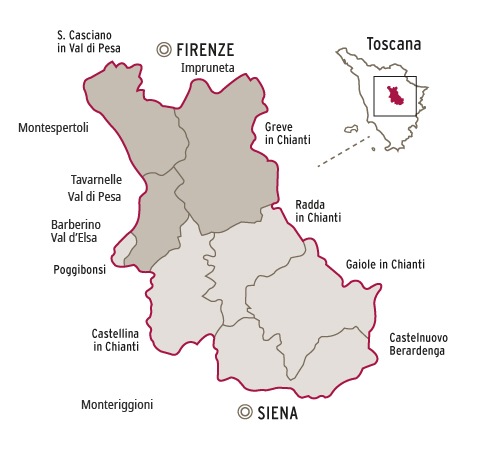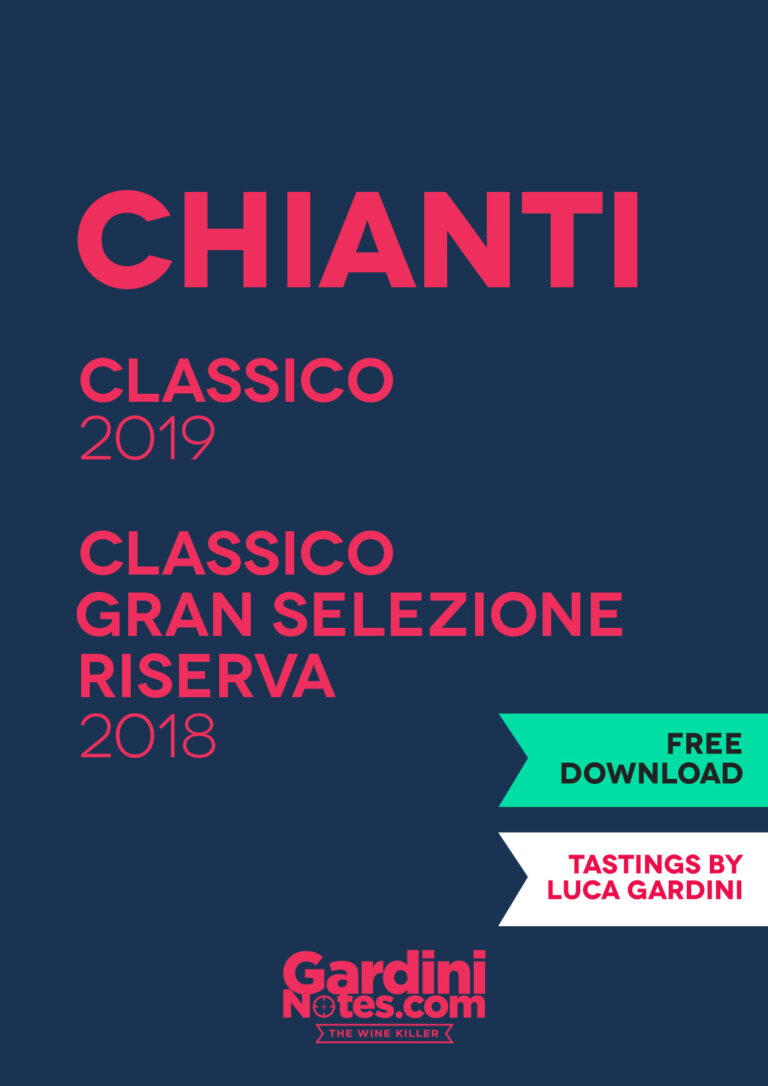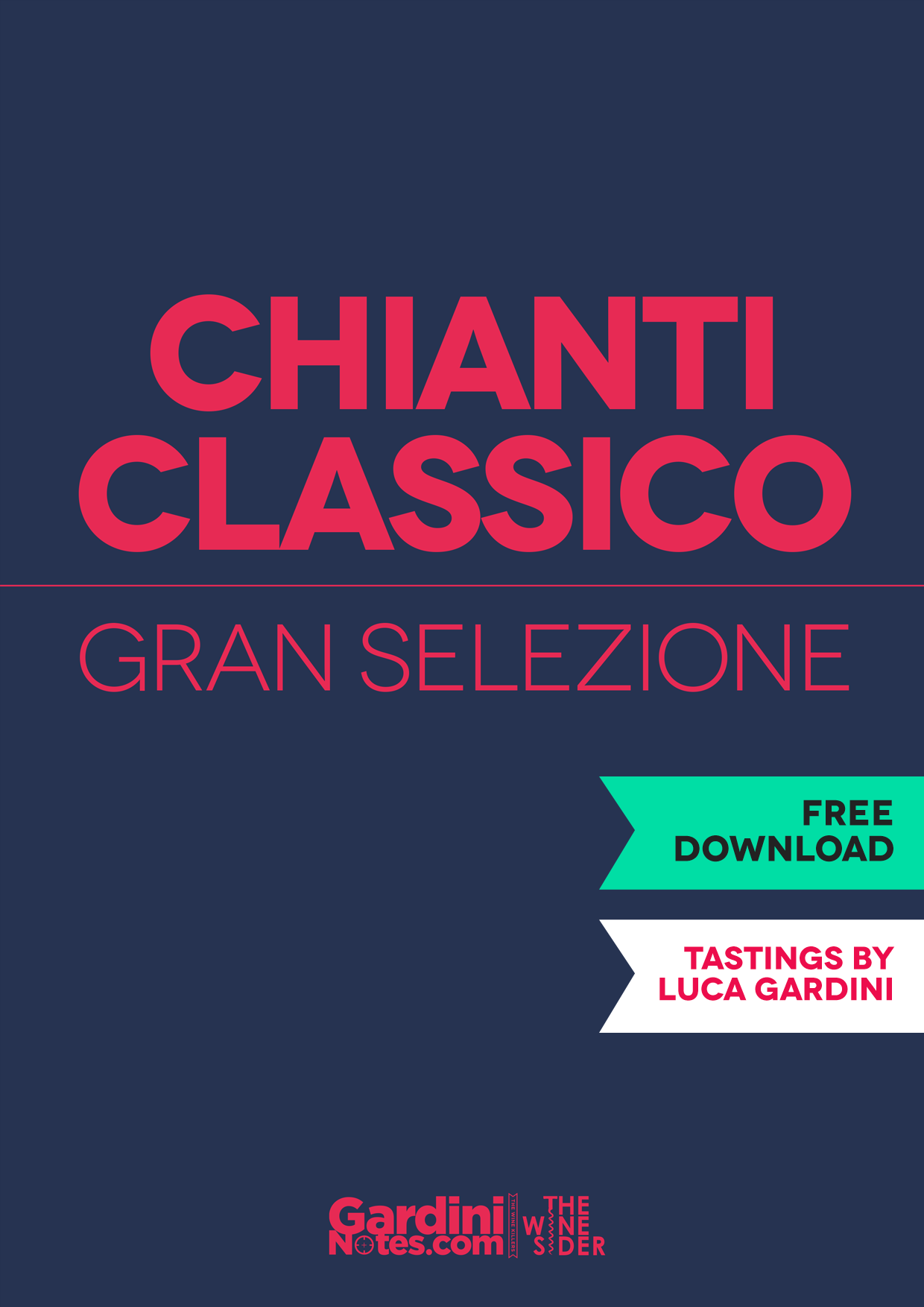Since 1932, Chianti Classico has always been produced in a designated part of Tuscany.

From 100% to 80% SANGIOVESE
Up to 20% OTHER GRAPES: Canaiolo, Colorino, Cabernet Sauvignon, Merlot
The first notary report documenting wine production in this same area dates back to the XIVth century. However, the territory was not always dedicated exclusively to vineyards, but also to olive crop for the purpose of olive oil production. These days almost 7200 hectares of vineyards are registered as DOCG classification for the production of Chianti Classico.
The Sangiovese grape, the variety from which the Chianti Classico is produced, is rather sensitive to the characteristics of the terroir where it grows. In this area, different geological structures coexist, such as clay, tuff, Chianti boulders, limestone, and marl. These soil features combined with the different expositions of the vineyards and altitudes give rise to a complex number of aromatic and gustative variables in the wines. One will quickly realise then that we cannot speak solely of a single Chianti Classico, even if the wine made here is classified as such.


Production zones and their relative characteristics:
As said before, Chianti Classico territory is extremely varied both in soils and expositions, so this division once again allowed to record all the different nuances among wines produced in this small though diversified territory, and to carry out a more accurate analysis.

San Casciano in Val di Pesa:
• Territory straddling two valleys, those delineated by the Pesa and Greve rivers.
• Soils for the most part, stony and clay-like.
Greve in Chianti:
• Soils rich in clay and calcium.
• Delicate wines, already rather expressive even when young, usually able to mature with elegance.
• In this territory, one finds two great sub-zones from the Chianti Classico: Lamole and Panzano (the soils here are rich in clay and marl).
Barberino Val d’Elsa:
• Zone under which fall two more territories to the west of the Chianti Classico production zone: Barberino Val d’Elsa and Poggibonsi.
• In Barberino, only 5% of the terrain is dedicated to the production of Chianti Classico.
• The territory is characterized by a climate that benefits from temperate winds arriving off the sea.
Tavarnelle Val di Pesa:
• Seat of the Chianti Classico producers association.
• The name for this zone is connected to the term “taberna,” an indication of the fact that here, even in the past, quality wine was produced.
Castellina in Chianti:
• A “hilltop” Chianti Classico is produced here, since the vines are planted up to 600 meters above sea level.
• Earth rich in alberese, as well as clay and galestro, in the southern part of the area.
Radda in Chianti:
• Perhaps one of the oldest areas of the Chianti Classico zone.
• Soils rich in alberese.
• Nervous wines, capable of long periods of aging.
Gaiole in Chianti:
• Variegated wines with a good presence of galestro but also tuff, a geological structure that gives elegance to wines.
• One of the zones with the highest elevations in the entire Chianti Classico production area.
• Very expansive zone, rich in a great number of variables that influence the wines produced here. For this, the Gaiole territory it must be divided into 3 production sub-zones.
Castelnuovo Berardenga:
• Territory geologically variegated bordered by Senese clay.
• Tuff is present in the soils.

Poggibonsi:
• Soils mainly made up of sand and pliocenic sandstones, with low presence of flysch.
• The wines here produced tend to be more structured and opulent.
Monteriggioni:
• Composit soils, of marine origin.
• Clay, sandstones and tuff rocks, with red soils in the area of Colle Val d’Elsa.
• Fruity, warm, of rich texture, with less tannins and less minerality, but with good acidity.
Montespertoli:
• Pliocenic originated soils, with small limestone rocks, due to the presence of rivers, and clay foundation.
• Here there are more active limestone and lower temperatures than the average, this kind of raw material tends to be highly structured.
Impruneta:
• Soils rich in structure, stones, minerals, clay and marls. It’s a prestigious land with good water holding capacity.
• The wines coming from this area have higher acidity and anthocyanins than the average, excellent structure and colour, higher alcohol content, longevity and finesse.















